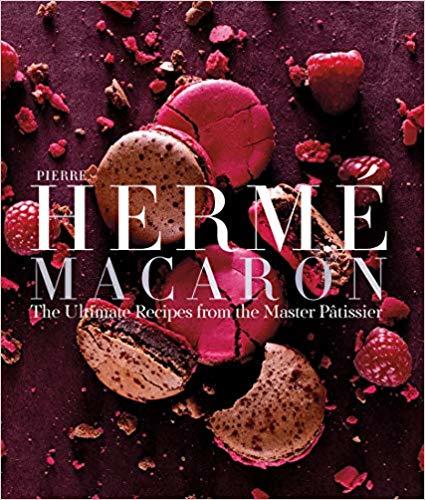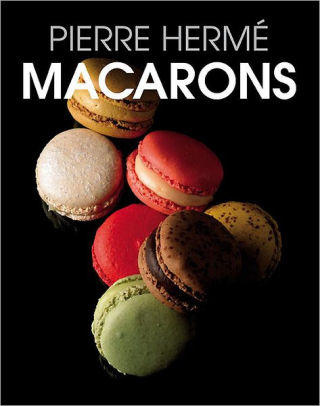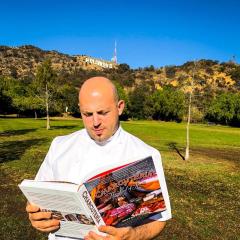Search the Community
Showing results for tags 'French'.
-
There are two local grocery stores here who I'd like to try to sell chocolate to but they have policies forbidding GMO soy, Soy lecithin is allowed only if organic or certified non-GMO. I use a lot of Felchlin, some Valrhona, a little Cacao Barry. The only mention of GMOs I've found from Felchlin is this note in a brochure: GMO absence: Felchlin fulfills current legislative requirements regarding GMO absence. All Felchlin products comply with the Swiss Regulation and the European Council Regulation related to genetically modified organisms in food and feed. Does anybody know what those requirements are? Is anything European going to be GMO-free? Or labeled above some %?
-
Has anyone come across a digital version of Practical Professional Cookery (revised 3rd edition) H.L. Cracknell & R.J. Kaufmann. I am using this as the textbook for my culinary arts students and a digital version would come in very handy for creating notes and handouts.
-
I'm a Brit. I'm also a closet Frenchman. To cap it all, I'm happily retired in Bangkok, the city of a street food culture that's second to none. The Thais are healthy and slim. I'm just this side of alive and far from slim. Lockdown has me fantasizing about my days working in London, Paris and New York, an existence, if one could call it that, revolving around gastronomy of one kind or another. They paid me, not so very much as it happens, to do what I enjoy doing most in life. We all get to do it, but I was one of a fortunate few who made it his metier. Well all that's in the past now, but I still dream of my time in Paris when lunch was a tad short of 2-hours, little-known local bistros remained affordable until the day they were discovered by La Bible (Michelin Guide) and the students were revolting - this was the summer of '68, for heaven's sake. Someone should open bistro here in Bangkok with a table d'hote of Soupe a l'Oignon gratinee, Blanquette de Veau, a stinky Epoisses and Tarte Tatin to finsih with creme fraiche. Ah, it's back to lockdown and pad Thai.
-
After batting about .500 with my previous approach to macarons, I came across Pierre Herme's base recipe online. After two flawless batches of macarons, I've been re-energized to continue to work at mastering them. Specifically, I want to try more of his recipes. My conundrum is that he has, as far as I can tell, two macaron cookbooks and I don't know which one I should get. I can't tell if one is just an updated version of the other or a reissue or what the differences really are. I was hoping somebody had some insight. I have searched online and haven't seen both books referenced in the same context or contrasted at all. This one appears to be older. And this one appears to be the newer of the two. Any insight would be helpful. Thanks,
-
Well, here I am again. It’s been just over 5 years since I last did a food blog. I’m excited and looking forward to doing this one just as I was in 2007! First, an update in general: We’re all well; Linda, Rupert and I. I’ve had a couple of minor strokes, but the magnificent French medical system saw me through those with no permanent damage. We’re still living in France and still loving it. We have moved though; all of about 6 miles. Our farmhouse was just too big and too expensive to run so we sold it. Linda & I now dance a little jig when the energy bills come in. It makes up for the lousy exchange rates! Our ‘new’ house is modern and somewhat smaller than the farmhouse. We still have 1 ½ acres, a pool and plenty of room. We are extremely happy with the move. Our ‘new’ village is just great very friendly. It’s unusual in that it’s actually laid out on a square grid. 400 year old town planning in action. We have a good village shop/ bakery. They made a really nice whole grain loaf in addition to all the normal sizes & shapes of French loaves. We also have small restaurant. Not likely to get any Michelin stars, but one can get a nice meal. They make a wonderful bread pudding. Our newest addition is a small food boutique, only open two days a week. They sell only local produce, fruits, vegetables, sun flower oil, pates, fois gras, a bit of wine and a few herbs. Local enterprise at its most local. I make a point of going in every week. More later, but let’s talk about food. I’ll start by going to the Sunday market in Saint Antonin Noble Val. St Antonin is a very old, very beautiful town right on the Aveyron river about 15 minutes away. Their Sunday market is great, but to be avoided during the summer months due to the crowds and lack of parking. Once we get to October the crowds thin out and the locals return to shop & to gossip. Gossiping being the great French pastime as it is in most countries. I’ll post about the market visit with pictures separately.
-
Off to Paris next weekend for the first time in a couple of years. Apart from having a good time, celebrating aniversaries, etc. my chief interests are bread and food related. I know the main kitchen shops and Librairie Gourmande, and I've done the famous boulangeries but does anyone have any suggestions or personal favourites or new arrivals in these fields? Plus, this time we're not flying, so can stagger back on Eurostar with a decent tagine in addition to the Martinique rum. Where's the best place reasonably near the centre to find North African cookware? Thanks Mick
-
Hello All! I wanted to share some great news-- my friend, French cook and culinary instructor Kate Hill, is bringing famed butcher and charcuterie master Dominique Chapolard for a bunch of workshops. There's still seats available at some of the sites--here is a link with the details: http://kitchen-at-camont.com/2013/02/24/two-day-workshops-in-the-usa-the-french-pig-making-farmstead-charcuterie/ TTFN, jeff
-
- Charcuterie
- French
-
(and 1 more)
Tagged with:
-
When a white veal stock ends up too dark and opaque, is there a way to rescue it and remove some of the discoloration? Perhaps by clarifying it with some ground veal and egg whites, like you'd do for a consomme? Some background: I've been going through a bit of a classical French phase for the past few weeks, and having recently come upon a great source for veal bones, I've been venturing into making white veal stock as a basis for some classical sauce experiments. I made my first batch last week, and it turned out perfect. I used bones and shanks of uniform size with a split calf's foot, blanched everything according to the guidelines in the French Laundry cookbook, replaced the water, rinsed everything, and then cooked it at 170 degrees F for 8 hours. The stock was clear, with a wonderful golden color and great body, and had an almost custardy aroma. Totally different from and much more subtle than white chicken stock. Anyway, last night I made a bigger batch with larger, unbroken shank bones, among other things. I sensed I was in for trouble when the bones threw off so much blood during the blanching phase that the water turned bright crimson and then dark brown-gray. I threw out the blanching water again, rinsed the bones, and started the stock, but I think the larger bones continued to throw off raw blood into the stock, darkening the end product. Also, I cooked the stock at a lower temperature (160) this time for ten hours--perhaps not hot enough for the proteins to coagulate out of the stock? I was surprised at how little scum rose to the surface throughout the entire process.
-
Hi everyone, I'd like to make some eclairs to take to an event with lots of people bringing food - because there'll be a variety of (tasty) stuff I'd like to make my eclairs really small so they're not too filling and people can try them (also I think they'll look cute). Is there any reason I couldn't pipe out very skinny choux lines and hopefully end up with dainty little puffs? Ideally the final baked size would be about 8 - 10cm long and less than an inch wide... but i'm wondering if they may not expand properly or have a solid shell or something... anyone know? Cheers, Stuart
-
Hi everyone, I'm hoping that I can get some up-to-date information for my vacation in France next month. I have some draft ideas (and a reservation for lunch at Olivier Roellinger's place ) but I'd like to hear where you'd recommend for any food-related topic. We'll be staying on the coast near Caen for a few nights to begin, then MSM for a night, then Rennes for a night, before driving on to Brittany for a week. We'll be staying roughly between Lorient and Pontivy while we're there. We're planning on driving back (to Germany) via Rouen and Champagne. On the list so far are: Calvados, cider, and cheese-tasting in Normandy Roellinger, obviously, Chez Jacky and Anne de Belon when we're in Brittany I've read some recommendations online, and have the Michelin Red Guide, but I'd love some recommendations for anywhere from Honfleur/Lisieux in the east to Quimper in the west (the northern coast of Brittany, including places like St. Brieuc, will be a little too far away I think but generally distances aren't a problem), and any hidden gems or less well-known Champagne producers that are worth a visit would also be gratefully received. I'm happy to share my experiences when I get back, and I'll post some other places we're considering in due course. Thanks in advance, IA
-
Please excuse my ignorance; I do not cook much with pork. I have a recipe in French that calls for "ventreche de cochon". I know this translates literally to "belly of pork". However, I am wondering if this is specific to raw, or some sort of cured product. The recipe calls for the ventreche de cochon to be sliced paper thin on a deli slicer, and it is briefly sauteed (3 minutes) into a fricassee of escargot. Does raw pork belly seem right to use in this scenario?
-
Clafoutis de Fevettes au Parmesean et Basilic Serves 4 as Main Dishor 6 as Side. This recipe appears in French in issue no. 140 of the Saveurs magazine as part of a series of recipes accompanying an article on 'primeurs', or local vegetables that appear at the markets only during the first few weeks of Spring. It can be prepared with feves that have been frozen fresh, but I would not recommend using dried beans. This recipe should work fine with both American all purpose and French type 55 flour, as the quantity called for is slight in comparison to the other ingredients. 500 g fresh young feves 4 eggs 20 cl milk 10 cl heavy cream (liquid) 70 g freshly grated parmesean 2 T flour 1 small bouquet of basil 1/2 tsp salt 1/4 tsp grated nutmeg fresh ground white pepper Preheat your oven to 160 C / 320 F. Blanche the feves a large pot of boiling salted water and refresh in cold water. Drain and reserve. Combine the eggs, the milk and cream in a large bowl and beat until well combined. Wash and dry the basil, remove the leaves from the stems and mince it finely. Add the salt, the flour, the parmesean, the pepper, the grated nutmeg, and the freshly minced basil. Add the young feves. Butter a clafoutis dish (noted in the recipe as 'un plat a clafoutis', but which a deep sided 10" square dish such as a corningwear would work, or a large loaf pan), give the batter a last mix, pour it into the pan, and put it in the pre-heated oven. Bake for approximately 35 minutes, until the top is golden brown and the center seems firm when you shake the pan. Serve it hot or cold, with a simple roquette salad or with chicken, rabbit, or veal. Goes well with a good rose champagne. Keywords: Main Dish, French, Appetizer, Hors d'oeuvre, Easy ( RG1243 )
-
I was sure that I had started a discussion on what cheese one could find in France to use when making cheesecake, but I can't find it even though I've searched diligently. In any case I got a good answer from Pti. Use Kiri since Philadelphia is difficult to find outside of Paris. I tried that and it worked perfectly. Only problem was that it seemed to take forever to open all of those small packets of Kiri. I've never seen Kiri packed in anything except those small wrapped morsels. Yesterday I tried a new tack. I went to our little Friday market and bought 4, 100 gram blocks of a very young local chevre. These worked perfectly! This was an uncooked cheesecake, lemon in this case, so I added a packet of powdered gelatin to the lemon juice and heated this until it dissolved. A cookie crust was baked, the chevre mixture went in and then it rested in the fridge for several hours. Due to my diet I used Splenda instead of real sugar. The result was great. Our guests loved it. The only thing I would change for next time is that I would add more gelatin. I thought the cheesecake was just a bit softer that I would have liked. We live & learn.
-
Hi all, I'll be heading for Toulouse and Bordeaux for some time off in a little while, and I thought I would go looking for some equipment for my home kitchen while I'm there. I'm mainly thinking about tins and moulds for brioche, Madeleines, cannelés etc. I could order these online (they're hard to come by in my part of the world), but shipping is usually quite significant for such orders... Besides, I'd love to browse a well stocked boulangerie/patisserie store while in France. So, to my question: Does anyone here know any markets or shops in Toulouse and/or Bordeaux (or in the vicinity) where I could obtain such moulds? I've tried my hands with Google, but since my French is still... ehm... shaky, I didn't make much progress in the search... Any pointers and advice greatly appreciated
-
I have been trying to find an authentic Tarte D'Alsace recipe lately, but nothing I have made has come close to the ones I enjoyed as an exchange student living in Strassbough about 15 years ago. Any help on this subject would be greatly appreciated. Thanks! Dan
-
I have registered at the French Pastry School in Chicago for one of their continuing education courses "Pastry Camp" next week. Just wondering if anyone has taken one of their classes and what their experience was. I'm really excited about the class, but a little nervous as well since I'm a home baker with no profressional training.
-
I'm translating a recipe from French to English. Here are some terms for which I have no translation other than literal. If there are other meanings, I'd appreciate a translation from those in the know: 1. "Sucre glacee." (Is this frozen sugar, or a specific type of sugar?) 2. "Beurre fin." (Is this just high-quality butter?) 3. "Couverture de chocolat amer." (It does not specify a cocoa %; should I asssume that "bitter chocolate couverture" is 99/100%?) Thanks. u.e.
-
I found two quart jars with Confit of Toulouse sausages cover in oil that have been in the spare refrigerator. I am fixing to convert it into a curing chamber for some fermented sausages and wonder whether I should keep or toss these sausages. Paula's book says they will keep for two or three months, but I think it's been closer to six. Thumbs up....or down?
-
I would like to know where I can find shops selling specialties of the Basque region in Paris. Thanks a lot.
-
I need to find the best (or the top, say 3 or 4, best) butters in France. Artisanal or industrial producers welcome. I am writing an article on butter, but beyond the 2 very common that are imported here in Brazil, don't know any other. Thank you all.
-
When we were in Paris in March we had dinner at Le Petit Pontoise where we had a wonderful tatin d'artichaut. It had (I think) eggplant and possibly tomatoes under the artichokes. I would like to recreate it but I am unsure how to deal with the eggplant. I was thinking maybe brushing thick slices lightly with olive oil and broiling/grilling. Any ideas? TIA
-
I will be in Europe with my family this summer (July 19-31) and my son and I would like to take a short (2 hours to one day) cooking class. We'll be based in Brussels but will be making day trips to Paris, etc. I have looked at Le Cordon Bleu but they only have one class during that time frame and it frankly doesn't sound that interesting. Any other suggestions?
-
was invited to a dinner party first time for us at a "dinner club".... we were invited late and all courses are spoken for, so I would like to bring a cocktail... something i can mix up (for the most part) ahead of time and something that will serve around 20 folks...needs to have a french origin in some way... any good variations on a french 75 you can think of? something more creative? something with a good story...? definetly want something in the "classic" side or some variiation there of... figured i could pick your brains... party is in 10 days thanks in advance shanty
-
I got an e-mail today talking about David's new book - it was a pretty quiet day on the internet so I read the e-mail all the way to the bottom - and saw a link for this French Tart Dough. Well I must say it intrigued me - I've been looking for a crust to use with my caramelized red onion, balsamic vinegar and bleu cheese tarts. My standard tart dough bakes up too puffy and leaves very little space in the tiny tart shells for the filling. This looked like it might make a nice thin crust and from the pictures looked like it would blind bake without the need for anything lining the shell. So I changed the recipe a little - I used half lard, half butter and cut back on the sugar to about 2 tsp. It was cool enough to work with very quickly after mixing. I took small walnut sized pieces and used my little wooden tart tamper dipped in some flour to press them into the tart molds. I pricked the bottoms with a small fork, and baked them for about 12 minutes at 350º F. For a first try, these were wonderful - nice thin pastry - no shrinkage. Perhaps a bit thick on the bottom, but I think that's just a matter of a smaller piece of dough. I made a small batch of lemon/lime curd with the one lemon and one lime I had in the fridge and served the tarts for dessert with a spoonful of curd. So next time around for savory tarts I'll cut the sugar back to 1 tsp and use a bit less dough per tart. This dough is so quick and easy - I highly recommend you give it a try. I can see it will be useful in a variety of applications - the full butter version would be great as the base of a simple fruit tart.
-
I'm cooking for a group of 20 soon and planning to do Coquille St. Jacques. After looking through dozens of recipes, I'm still torn between the a la Parisienne and Provencale styles. Serving with a crustless asparagus quiche and pea shoot salad. As a spring event I want the scallops to be somewhat light and fresh. Your comments and suggestions please.














